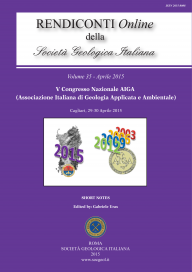
Hydrogeological processes in clay-rich slopes: further insights from geochemical modelling
Federico Cervi (a)
(a) Department of Civil, Chemical, Environmental, and Materials Engineering, University of Bologna, Viale Risorgimento, 2, 40136, Bologna, Italy. E-mail: federico.cervi2@unibo.it
Volume: 35/2015
Pages: 58-61
Abstract
Slope instability phenomena frequently develop within clay-shales. Despite rise in pore-water pressures is one of the main factors for landslides triggering, hydrogeological processes taking place in slopes composed by clay-shales are far to be fully understood. That is due to the high heterogeneity of the materials and to the presence of fissures and fractures that can: (1) allow the presence of perched aquifers, (2) lead to the hydrogeological parting between stable and unstable sectors of the slope, (3) permit the development of preferential flow-paths. Moreover, (4) thrusts and faults can drive groundwater flow from far away, adding further complexity to the definition of the hydrogeological boundaries of the studied systems. Hydrochemistry is a powerful tool, which helps to unravel the abovementioned points. The purpose of this short note is to test the usefulness of geochemical modelling in identifying groundwater dynamics and interactions between host-rocks and groundwater. Both thermodynamic and kinetic approaches have been used in an earth-flow located in the northern Apennines of Italy.
Keywords
Get Full Text